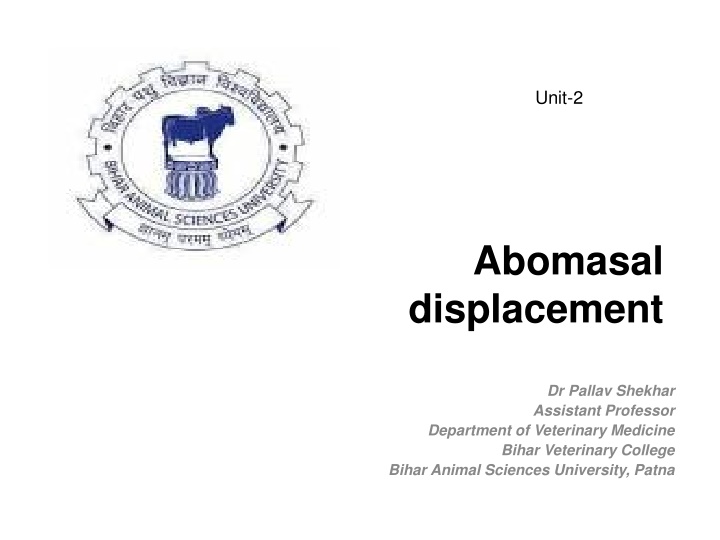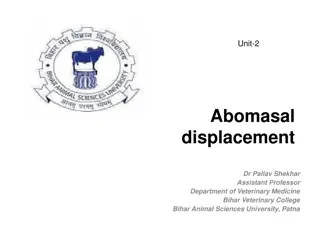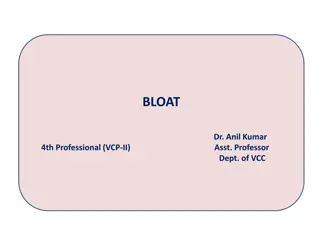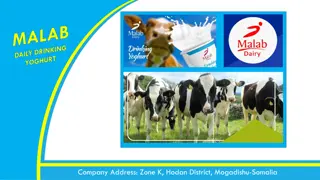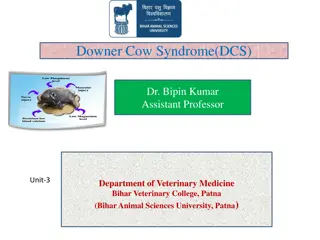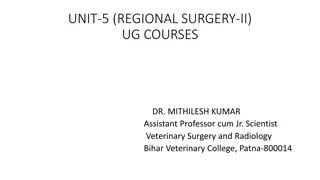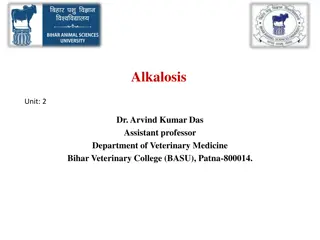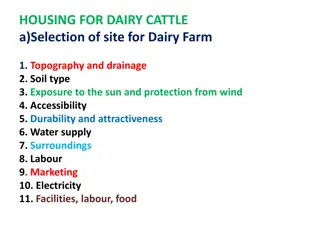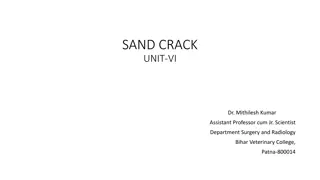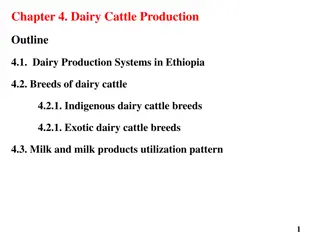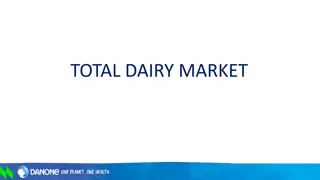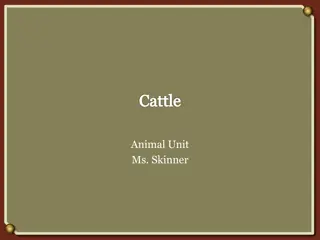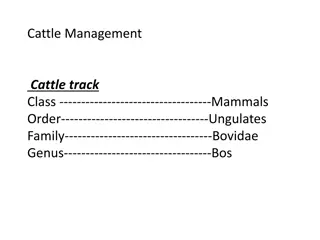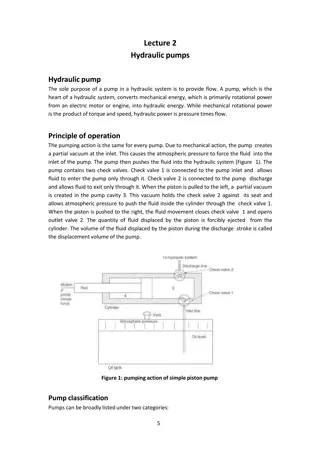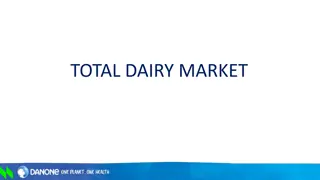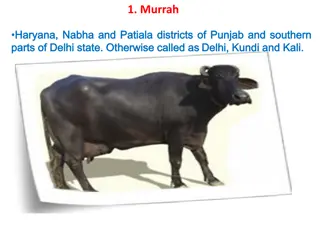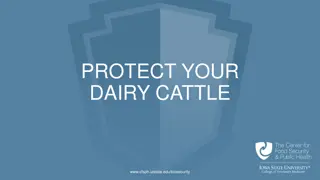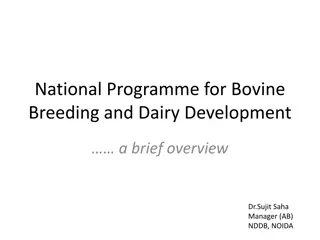Abomasal Displacement in Dairy Cattle
Abomasal displacement is a common issue in older lactating dairy cattle, often related to inadequate nutrition and concurrent diseases. This condition involves the displacement of the abomasum from its normal position, causing symptoms like anorexia, ketosis, and dehydration. Learn about the causes, clinical findings, and management of left-sided displacement of the abomasum (LDA) to effectively address this production and herd problem in dairy cattle.
Download Presentation

Please find below an Image/Link to download the presentation.
The content on the website is provided AS IS for your information and personal use only. It may not be sold, licensed, or shared on other websites without obtaining consent from the author.If you encounter any issues during the download, it is possible that the publisher has removed the file from their server.
You are allowed to download the files provided on this website for personal or commercial use, subject to the condition that they are used lawfully. All files are the property of their respective owners.
The content on the website is provided AS IS for your information and personal use only. It may not be sold, licensed, or shared on other websites without obtaining consent from the author.
E N D
Presentation Transcript
Unit-2 Abomasal displacement Dr Pallav Shekhar Assistant Professor Department of Veterinary Medicine Bihar Veterinary College Bihar Animal Sciences University, Patna
ABOMASAL DISPLACEMENT This is displacement of abomasums from its normal position. LDA RDA
Displaced Abomasums DA s, LDA s, RDA s Adult lactating dairy Production problem Herd problem [related to nutrition] Majority of DA s have concurrent diseases
History and Signalment of DA Age: older lactating dairy cattle Timing: 80% occur during first month after parturition Nutrition: Dry cow rations: inadequate fiber Concurrent disease: 40% of DA s have retained placenta, mastitis, or metritis
Left-sided displacement of the abomasums (LDA): Abomasum displaced to left side. It is generally associated with high concentrate diet, atony of rumen and gas distension.
Why does the abomasum displace? (1) Abomasal atony (2) Increased abomasal gas production (1) + (2) => abomasum moves (LDA,RDA) Normal position of abomasum Left displacement
Clinical findings Anorexia, Ketosis slab-sided left lateral abdomen. On auscultation of abdomen tinkling and gurgling sounds are heard spontaneously on the left side. Simulataneous auscultation and percussion on left paralumbar fossa and extending several inches cranially yield a high pitched resonant, tympanic sound (ping) that is similar to a pebble dropped in a well. Malena and symptoms of dehydration. Some animals can recover spontaneously.
Clinical Signs (continued) Paralumbar fossa: slab-sided abdomen Visualize / Palpate PLF Rectal palpation (can t) Mild colic Mild hypocalcemia Hypotonic rumen Cold ears, widely dilated pupils
Clinical Signs (continued) LDA: Ping & Splash Ascult and percuss Ping high pitched Ballottment for splash of fluid All pings are not created equal rumen ping Note: ~15% of LDA s DO NOT PING or ping sporatically
Diagnosis History Slab Sided left abdomen Liptak test
Treatment Calcium, neostigmine and saline cathartics are some of the compounds that have been used. Rolling the cows, violent exercise and transport over bumpy roads cause spontaneous recovery sometimes
Non-Surgical Technique: Rolling Cast cow with ropes into right lateral recumbency Roll onto back & extend the rear legs Roll in a 90-degree arc for 3 minutes, ending in left lateral recumbency Bring the cow to sternal position & allow to stand Ascultate the left thorax to ensure LDA is relieved
Rolling Technique Advantages Quick & easy technique No invasive surgery DISADVANTAGES >50% redisplace If RDA or RTA are present, can exacerbate problems
RDA Right sided displacement of abomasums (RDA): Abomasum is displaced toright side of the abdomen between liver and right abdominal wall. Etiology : Abomasal atony or distension immediately after parturition. Clinical findings: Sunken eyeballs, scant, soft and dark coloured feces. Auscultation and percussion over the right flank commonly elicit a ping. Abdominal pain with kicking at abdomen, depression of back and crouching are also recorded.
Diagnosis: Per rectal distension of abomasums, Paracentesis of distended abomasums will reveal large quantities of blood tinged fluid with PH of 2-4, metabolic alkalosis, hypochloraemia hypokalaemia and elevated total protein also indicates abomasal displacement.
Treatment: Treatment with 500 ml of 25% calcium borogluconate, early treatment with fluids and electroytes intravenously and orally mineral oil(5-10 litres/day orally ) and magnesium hydroxide (500gm per adult cow orally every 2 days) are used.
